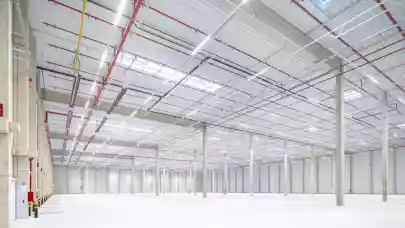
Recent changes in Sunday trading laws and commercial property tax regulations have not discouraged investors, both the existing well-established players as well as new entrants to the market. Similarly to the previous year, the portfolio transactions in 2018 are expected to account for a significant share in the total investment volume. Jędrzej Suchowolec, Senior Advisor at Cresa Poland, commented on current investors’ interest in retail properties.
Does the Polish retail investment market continue to attract interest from foreign funds?
Yes, the retail properties are sought-after by foreign investors. Poland’s retail property market continues its rapid growth. 2017 investment transaction volume for the sector, remained at a high level similar to that of 2016, around €1.9 billion. Investment activity was particularly strong in the second quarter and the fourth quarter of 2017, when €800 million and €600 million of deals took place, respectively.
The retail sector dominated the investment market last year, as a result of relatively low investment activity in the office sector and the completion of a number of large retail deals, including portfolio deals. The key transactions were the sale of Peakside’s Fashion House portfolio to Deutsche Asset & Wealth Management Fund for more than EUR 200m, Pradera’s purchase of an IKEA portfolio for more than €230 million, and €170 million acquisition of Blackstone’s property portfolio. The largest deal was Union Investment’s acquisition of the Magnolia Park shopping centre in Wrocław for €380 million.
What is the level of profitability of retail properties?
Last year we observed further yield compression for prime retail properties in Poland, to around 5%.
Compared with the yield on the Euro Zone 10-year Government Bonds of around 1%, the good retail schemes are an attractive form of alternative capital investment in terms of possible return on investment and risk. There are several factors impacting on price rise of shopping centres: the country’s strong economy, its attractive yields compared with Western Europe, its relatively low costs of financing and its limited supply of high-quality schemes for sale, for which investors competed strongly. Secondary facilities, which lacked the same level of growth potential and drew lower investors’ interest, turned in less strong yield compression.
Who buys the retail properties in Poland?
Large-scale dominant retail schemes attracted interest in 2017, mostly from German funds. Institutional investors from South Africa were also active in the Polish market. A few investors from Central and Eastern Europe, including the Czech Republic and Hungary, made their debut in the Polish property market during the year.
What does the future hold for the retail investment market in 2018?
2018 looks promising, with a number of large transactions due to complete after having been agreed in 2017. We expect the interest from South African and German institutional investors to continue, alongside growing interest from Asian and Central and Eastern European funds. The market is expected to consolidate as key players continue to acquire more properties. Attractively located schemes in Poland’s main agglomerations will be the most sought-after investments; however, their limited supply may draw investors’ attention to smaller cities.



